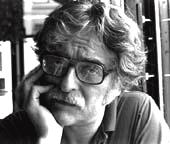For a long time, still photojournalism of breaking news was trampled by television news. Twenty years ago in the Middle East it could take as long as a week and a half before your color images were seen by the readers of the weekly newsmagazines. Shooting, shipping, processing, editing and engraving original film, especially from a war zone, took time. Newspapers had black-and-white wire images, but choice was limited and even those pictures could be late for publication in the next day's paper, especially when the photographer got pinned down at the event. Over the years, the situation improved - but not a whole lot when the originals were being shot on film. For what happened that day, you still turned to television, expecially when the news was a long way from the publications' darkroom. That's changed now, and it has never been more obvious than in the coverage of the war in Afghanistan. Thanks to the digital camera, when I pick up the national edition of The New York Times (and a lot of regional papers), I see images as timely as those on television. But, I have the advantage of more detailed coverage and sometimes superior coverage to what can be crammed into a few minutes on the nightly news. And, of course, I have that most precious quality that is the domain of print - immediate, random access. After I've had my coffee and my brain has begun to function, before I have to move on to the tasks of the day, I can pick up the paper or the magazine and read it in the bathroom; I can read the stories that interest me and skip the others. Try that with television news. Paper and, increasingly, the internet let you select what you want, when you want and where you want. And now those pages, pulp or electronic, can have digital news images that are timely. Of course film is important. Probably the majority of images that you see on this site originated on film. Certainly, film has a number of advantages when you are working on projects that don't have an immediate deadline. But I come from an era where even editors on the print publications that I worked for were getting their daily visual news from TV. I have incredible admiration and affection for a lot of the television journalists I worked with under less than desirable conditions. But I sure am tired of hearing editors say, "Does one of our guys have that pic I saw on channel 7?" I really look forward to hearing a television producer say, "Do we have that picture I saw in the paper?" Isn't this a strange response to the many inquiries that come to this column concerning black-and-white film? To me, the great journalistic images I recall are, without exception, conventional black-and-white film images. It is the medium that I love; it is where I am most comfortable. It is what I will always use for my personal work. But that is not a reason to knock digital images. All the time, I hear, "They just don't have the quality." What qualities? Do you mean they are not quite as sharp as some hot processed neg snap? What a standard. How about these qualities - timely, relevant and not yet suitable for wrapping fish. Digital news images are going to change our world. Some people say that it was television that killed the great picture magazines like Life. I think it is a little more complicated than that. But digital still photography is a worthy, in some ways superior, companion to that moving digital image that shows up on my tv set just as someone calls on the phone or my wife tells me dinner is ready. Bill
Pierce |
|
|
Write a Letter
to the Editor |
